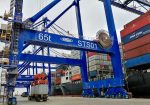Namibia’s automotive sector, heavily reliant on vehicle imports from South Africa, Japan, and the European Union (EU), faces potential disruptions as global automakers grapple with financial challenges and shifting market dynamics. A recent report by Simonis Storm highlights the risks posed by the struggles of Japanese automakers Nissan and Honda, whose declining fortunes could force Namibian importers to diversify their supply chains. This shift may open doors for increased penetration of European and Chinese vehicles, particularly in the electric vehicle (EV) and hybrid segments, while also presenting challenges for consumers, businesses, and policymakers.
The Current Landscape: Reliance on Japanese Imports
Namibia’s vehicle market is dominated by Japanese brands, with Toyota and Volkswagen leading the pack. However, Nissan and Honda have also played a significant role in providing affordable passenger vehicles and commercial pickups, making them popular among Namibian consumers and businesses. Despite their strong presence, both automakers are facing significant headwinds. Nissan, in particular, is in deep financial distress, with net profits plummeting to $33 million in the nine months to December 2024, down from $2.1 billion the previous year. The company has cut 9,000 jobs, closed multiple factories, and plans to reduce global production by 1 million units by 2026.
Honda, while in a stronger financial position, is also grappling with declining sales in key markets like China. The recent collapse of a proposed $50 billion merger between Nissan and Honda—a deal that would have created the world’s third-largest automaker—has further exacerbated concerns about the long-term stability of these brands. The merger failed due to disagreements over control and decision-making processes, leaving both companies to navigate the competitive pressures of the EV transition independently.
Risks to Namibia’s Automotive Sector
The struggles of Nissan and Honda pose significant risks to Namibia’s automotive sector. If these brands scale back operations or withdraw from smaller markets like Namibia, the country could face several challenges:
*Reduced Vehicle Options and Higher Prices: A decline in the presence of Nissan and Honda could reduce competition in the Namibian market, giving dominant brands like Toyota, Volkswagen, and Hyundai greater pricing power. This could lead to higher vehicle prices for consumers and businesses.
*Challenges for Local Dealerships and Service Centers: Namibia relies heavily on official dealerships and independent auto shops for vehicle servicing. A withdrawal by Nissan and Honda could result in job losses in sales, maintenance, and repairs, impacting the local economy.
*Higher Costs for Spare Parts: Existing Nissan and Honda vehicle owners may face difficulties in sourcing spare parts, driving up ownership costs and potentially reducing the resale value of these vehicles.
*Impact on the Second-Hand Market: Demand for used Nissan and Honda vehicles could rise, driving up prices in the preowned market and making affordable transportation less accessible for many Namibians.
Opportunities for Diversification and Modernization
While the challenges are significant, the potential decline of Nissan and Honda in Namibia also presents opportunities for diversification and modernization of the country’s vehicle market. One potential outcome is the accelerated adoption of EVs and hybrid vehicles. With Japanese automakers struggling to compete in the EV space, Chinese manufacturers like BYD and Chery could seize the opportunity to introduce affordable, technologically advanced alternatives.
Chinese automakers have been aggressively expanding their global footprint, particularly in the EV segment, and Namibia could benefit from this trend. The introduction of more EVs and hybrids would align with Namibia’s increasing focus on sustainable energy solutions and could be further supported by government incentives for EV adoption. However, the lack of EV infrastructure, particularly charging stations, remains a critical barrier. Without significant investment in this area, widespread adoption of EVs may remain slow and concentrated in urban centers.
The Role of Government and Industry Stakeholders
The Namibian government and industry stakeholders have a crucial role to play in navigating this transition. Policymakers could incentivize the adoption of EVs and hybrids through favorable import duties, tax incentives, and trade agreements. Additionally, investments in EV infrastructure, such as charging stations, will be essential to support the growth of this segment.
Industry stakeholders, including dealerships and importers, may need to explore partnerships with emerging automakers, particularly those from China and Europe, to diversify their supply chains and mitigate potential disruptions. Adapting to shifting consumer demand and embracing new technologies will be key to ensuring the long-term sustainability of Namibia’s automotive sector.
Conclusion: A Pivotal Moment for Namibia’s Automotive Sector
The struggles of Nissan and Honda, coupled with the collapse of their proposed merger, underscore the mounting competitive pressures facing traditional automakers in the global transition to EVs. For Namibia, these developments present both risks and opportunities. While the potential decline of these brands could disrupt the country’s automotive supply chain, it also opens the door for a more diverse and modernized vehicle market.
By diversifying supply chains, embracing new technologies, and implementing supportive policies, Namibia can navigate this pivotal moment and position itself for a sustainable and competitive automotive future. The coming years will be critical in shaping the trajectory of the country’s vehicle market, with government action and industry adaptation playing key roles in determining the outcome.










